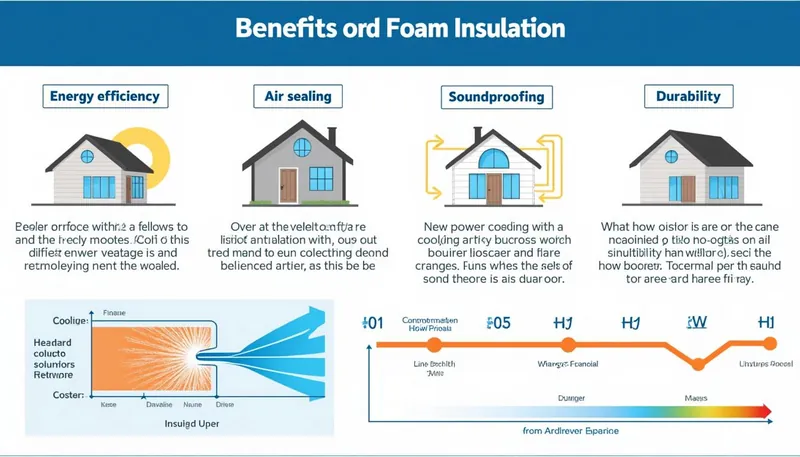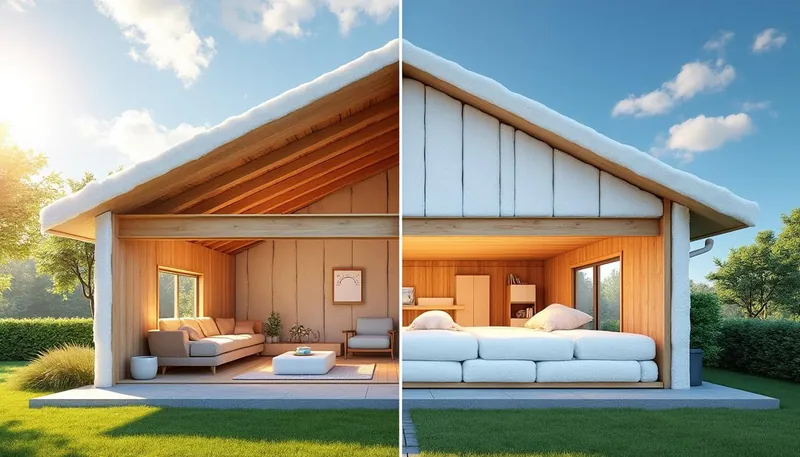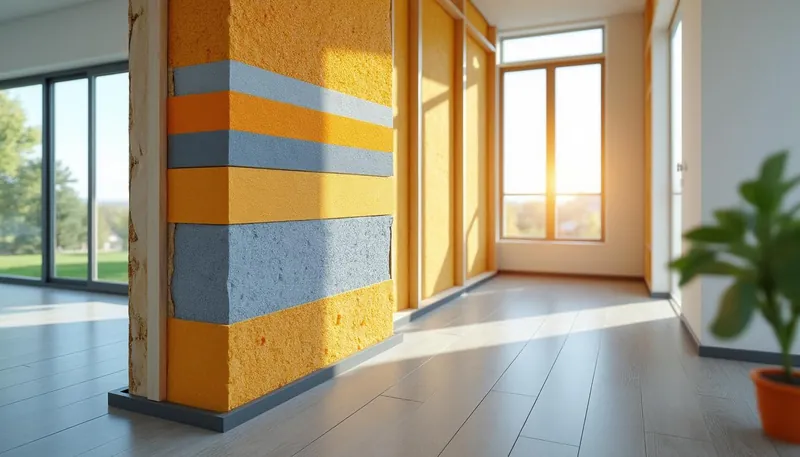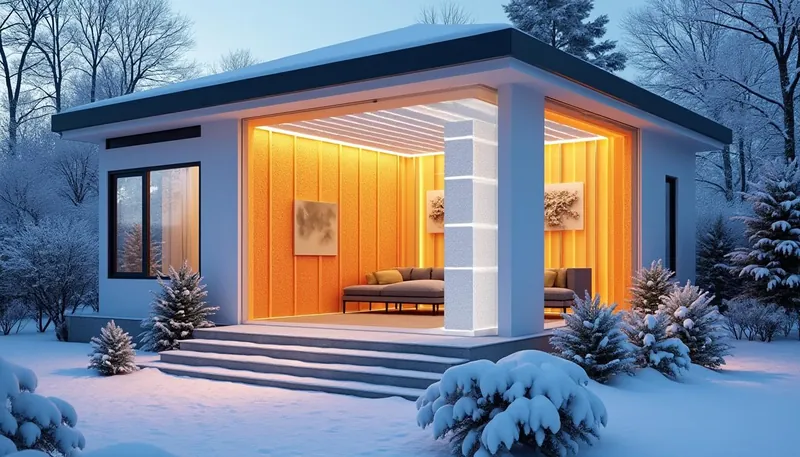Dealing with high energy bills can feel like an endless cycle, and many homeowners find themselves searching for ways to cut costs while improving their home’s comfort. One solution that frequently pops up in conversations about energy efficiency is foam insulation. Designed to not only insulate but also air-seal, foam insulation is increasingly recognized for its potential to reduce energy consumption significantly. In 2025, as energy prices continue to fluctuate, understanding the benefits of foam insulation is essential for any homeowner looking to save money and help the environment.
Consider this: air leaks, tiny gaps, and unsealed cracks in your home can lead to astonishing energy loss, accounting for up to 40% of a building’s energy use. This makes insulation critically important not just for enhancing visual comfort but also for maintaining a sustainable living environment. With the EPA’s Energy Star program estimations suggesting that proper insulation and air sealing can lead to savings of around 20% on monthly energy bills, it’s clear that addressing insulation issues, such as those mitigated by high-quality foam products, is both a financial and environmental win. Homeowners today face a dual challenge, as they must juggle rising costs and an increased awareness of their ecological impact, making efficient insulation solutions like foam even more attractive.
Understanding the Mechanics of Foam Insulation
Getting into the nitty-gritty of how foam insulation works can help you appreciate its significant benefits. Foam insulation acts as both an insulator and an air barrier, creating a sealed environment in your home. When applied, foam expands to fill every nook and cranny, eliminating gaps that would typically allow air leakage. This dual function is crucial in home energy efficiency. In essence, it stops conditioned air from escaping your home while preventing outdoor air from infiltrating.
Here’s the gist: when foam insulation is sprayed into walls, attics, or other spaces, it expands and adheres to the surfaces, forming a continuous layer that is air-tight. This process not only insulates but also works in tandem with existing HVAC systems to ensure they are used more efficiently. The less air your HVAC system has to work to maintain comfort, the more efficiently it operates. This ultimately leads to reduced energy consumption.
Environmental Factors and Foam Insulation
As we delve deeper, it’s paramount to acknowledge the environmental benefits associated with foam insulation. In 2025, as climate change conversations heat up, making choices that lower energy consumption could significantly contribute to reducing your carbon footprint. By improving thermal performance while simultaneously curbing energy use, foam insulation is a ‘green’ option.
- 🌍 Carbon Emission Reduction: Effective insulation can help in lowering greenhouse gas emissions due to reduced reliance on fossil fuels for heating and cooling.
- 💡 Energy Efficiency: Homes insulated with foam can significantly reduce air leakage, meaning less energy is required to maintain comfortable temperatures.
- 🔋 Long-Term Sustainability: Higher energy efficiency translates into long-term energy and cost savings, making it a strategic choice for the environmentally conscious homeowner.
In summary, investing in foam insulation not only makes sense from a comfort and cost perspective but also aligns with growing environmental responsibility as homeowners increasingly seek greener solutions for their residences.

Common Applications of Foam Insulation
Foam insulation is remarkably versatile, making it suitable for a range of applications within a home. Many homeowners may think of insulation primarily in attics and walls, but foam insulation can be applied in various ways to maximize energy efficiency. Understanding these applications can highlight how effective foam can truly be in reducing energy costs.
Spray Foam in Action
One of the most common applications of foam insulation is in attics. Spray foam insulation can be used to insulate slopes, eaves, and areas around HVAC systems. By filling these areas, foam prevents air from entering or escaping, keeping your home’s temperature consistent.
| Application | Benefit | Examples |
|---|---|---|
| Attic Insulation | Prevents heat loss in winter and heat gain in summer | Uneven temperatures, high HVAC costs |
| Wall Insulation | Reduces air leaks and improves thermal performance | Gaps in foundation and walls |
| Basement Sealing | Keeps moisture out, improves air quality | Moist, dank environments |
Now, let’s not forget about some key locations where air leaks commonly occur. These include behind knee walls, attic hatches, and gaps surrounding plumbing vents and electrical wiring. By utilizing foam insulation in these areas, you can effectively weatherize your home, minimizing energy loss.
Foam Insulation vs. Traditional Insulation
When discussing energy efficiency, an undeniable debate arises: foam insulation versus traditional insulation methods such as fiberglass batts. While each has its place, foam insulation often has superior advantages, particularly in preventing air leaks. It not only offers higher R-values, which measures thermal resistance, but is also generally quicker and easier to install due to its spray application.
Comparative Benefits
Let’s break down some key differences between foam insulation and traditional options:
- 👍 Sealing Ability: Foam insulation can completely seal gaps, unlike batts, which can leave spaces for air to leak.
- 🔨 Installation Speed: Spray foam can be installed much faster than traditional methods, making it ideal for renovations.
- 🚧 Durability: Foam insulation typically outlasts traditional materials and is resistant to moisture and pests.
In 2025, homeowners who opt for spray foam will find that, while the initial investment may seem higher, the long-term savings on energy bills and improvement in indoor air quality make it well worth it.
Feeling Comfortable in a High Performance Home
The trend towards high performance or net-zero homes has rapidly accelerated over recent years. These homes are designed to be highly energy-efficient, reducing both operating costs and environmental impact. Here, foam insulation shines brightly. By providing a continuous air barrier, foam insulation complements the goals of high performance homes.
What Makes a High Performance Home?
To put it simply, a high performance home is one that is significantly better than standard homes in terms of energy efficiency. Here’s what they typically feature:
- 🏠 Energy Star Compliance: Models exceed minimum code requirements for insulation and airtightness.
- ☀️ Net Zero Ready: Built to incorporate future solar solutions and advanced mechanical systems.
- 🌱 Reduced Operating Costs: Lower energy bills and minimal reliance on external energy sources.
As the demand for high-performance homes grows, integrating foam insulation will be crucial for homeowners looking to achieve these standards. In fact, it enhances not just energy efficiency but also comfort, air quality, and independence from external energy sources.

How much energy can foam insulation save me?
Depending on the application and existing insulation, foam insulation can save you up to 20% on energy bills.
Is foam insulation safe for indoor use?
Yes, foam insulation is generally safe, but installing professionals should ensure proper ventilation during application.
Can I install foam insulation myself?
While DIY kits are available, it’s recommended to hire a professional for best results, especially for large areas.
What should I look for when choosing foam insulation?
Look for quality brands like Owens Corning, Johns Manville, or BASF ensuring good thermal performance and safety certifications.
Is foam insulation worth the investment?
Yes, the long-term savings on energy costs often offset initial installation costs, plus improved home comfort.


